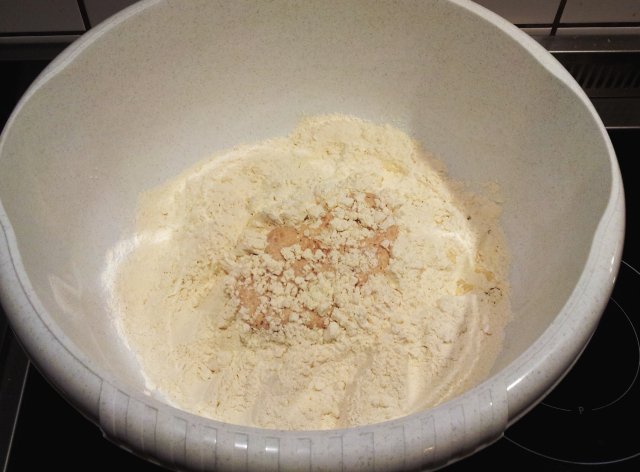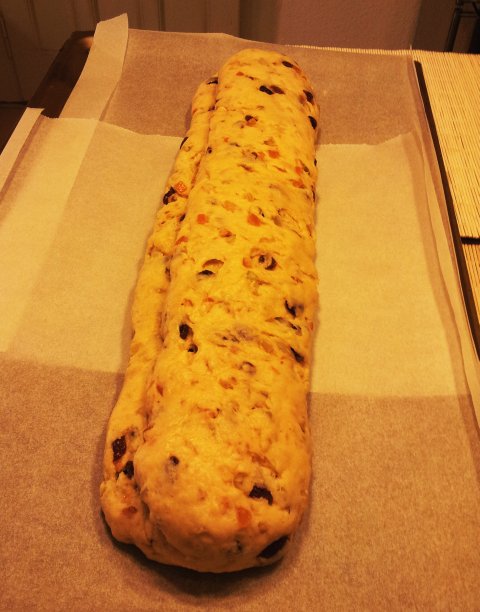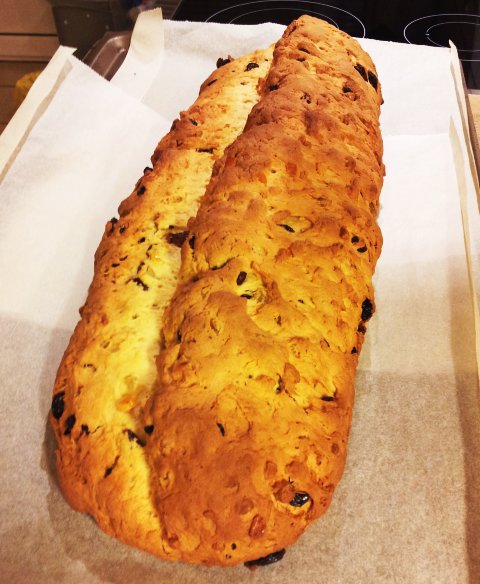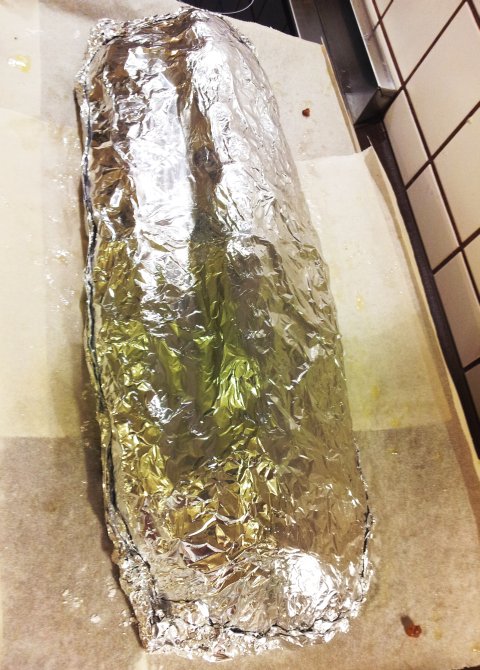The time is right to get started with some Christmas bakery. Stollen, a long standing German Christmas tradition. It comes in various kinds and modifications, but there is only one truely original recipe.
Don’t use any self-rising flour, or baking powder – really Stollen always uses yeast to rise.
1 kg plain wheat flour, Type 405 according to German industrial norm (DIN) no. 10355
60 g of baking yeast (about 1.5 regular yeast cubes), can be subsituted by active dry yeast, but the real thing is always baked with fresh yeast, commonly available at all German supermarkets.
250 mL milk (warm up; not too hot!)
First, to get the yeast started, put all flour in a suitable bowl (plastic bowl most prefered), make a hole in the center, put in the yeast and mix with some milk to form a semi-liquid dough. Cover with some of the flour, and let it sit for 30 minutes.
This is how it should look like.
Add:
1 egg, 1 egg yolk (some traditional recipes don’t use eggs, but I highly recommend it, otherwise, it will be a pretty ‘flat’ Stollen, unless you have a suitable mould)
180 g sugar (extra pure saccharose – just kidding; refilled with ordinary, plain sugar)
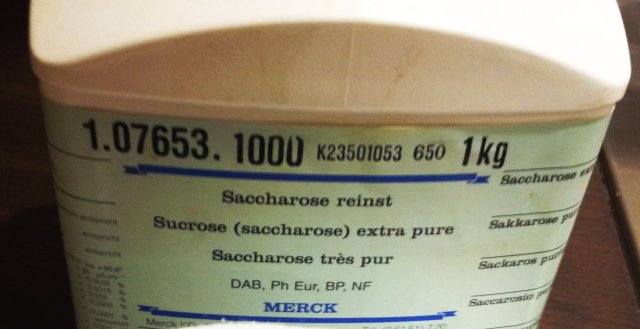
200 g butter (room temperature!)
and, the remaining part of the milk.
My traditional recipe doesn’t need any almonds – but these are common additions to other Stollens. Therefore, you might add 125 g of ground sweet almonds, and 50 g of ground bitter almonds, along with some more milk.
Also, you can add mace spice, but not too much!
Knead to a firm dough. If too dry, add some more milk. Don’t add too much, dough should not be sticky or too soft! Properly knead with your hands. No machines are required for this recipe.
Let this dough raise for at least 60 minutes at a warm place.
In the meantime, we prepare the additions:
200 g citronat (rather finely cut!) – candied peal of a special type of lemon
100 g orangeat (finely cut!) – candied orange peal
500 g raisins (wash throughly with at least 1 liter of boiling water, and pick out any that don’t look 100% perfect)
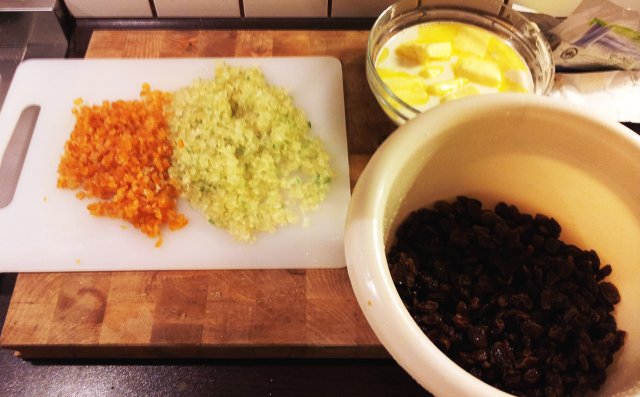
Key thing is that the citronat and orangeat are finely cut, nothing is worse than big chunks of this in the final Stollen.
Once the dough has rested long enough, the citronat, orangeat and raisins are added – best by flattening out the dough to about 3/4″ thickness, additing the ingredients, and then folding the dough – this will reduce the effort to form a uniform dough.
Make sure to remove any raisins from the surface (these will scorch and give bitter taste) – just push them in, or remove and eat.
Let the Stollen raise for about 30-45 minutes (avoid air drafts, keep in well-heated room).
Then, bake in a pre-heated oven. Temperature: For best result, an electric baking oven is much prefered, circulating air type. Pre-heat to 200°C.
Insert the Stollen. This will help with retaining the shape.
After 10 minutes, set temperature to 165°C, and bake for another 60 minutes (cover with a piece of aluminum foil after 30 minutes).
Test with a wooden stick – if no dough adheres, everything went fine. Otherwise, leave for another 10-15 minutes.
While still hot, apply about 200 g of molten butter with a soft brush.
Cover with a layer of powdered sugar (prefereably, use pure powdered sugar without any other ingredients that are commonly use in ‘icing sugar’).
Carefully wrap in aluminum foil to provide a good seal.
Now, the most difficult part, let it rest for about 4 weeks at a reasonably cool and dry place (guest bedroom, corridor, or similar place that is free of strong odors and free of damp).
Note: this recipe is all in metric units, rather than cups, ounces, etc, because this is about exact replication of a traditional Stollen. This will only work if done accurately, with precise weights, and well-controlled temperatures all throughout the process.

